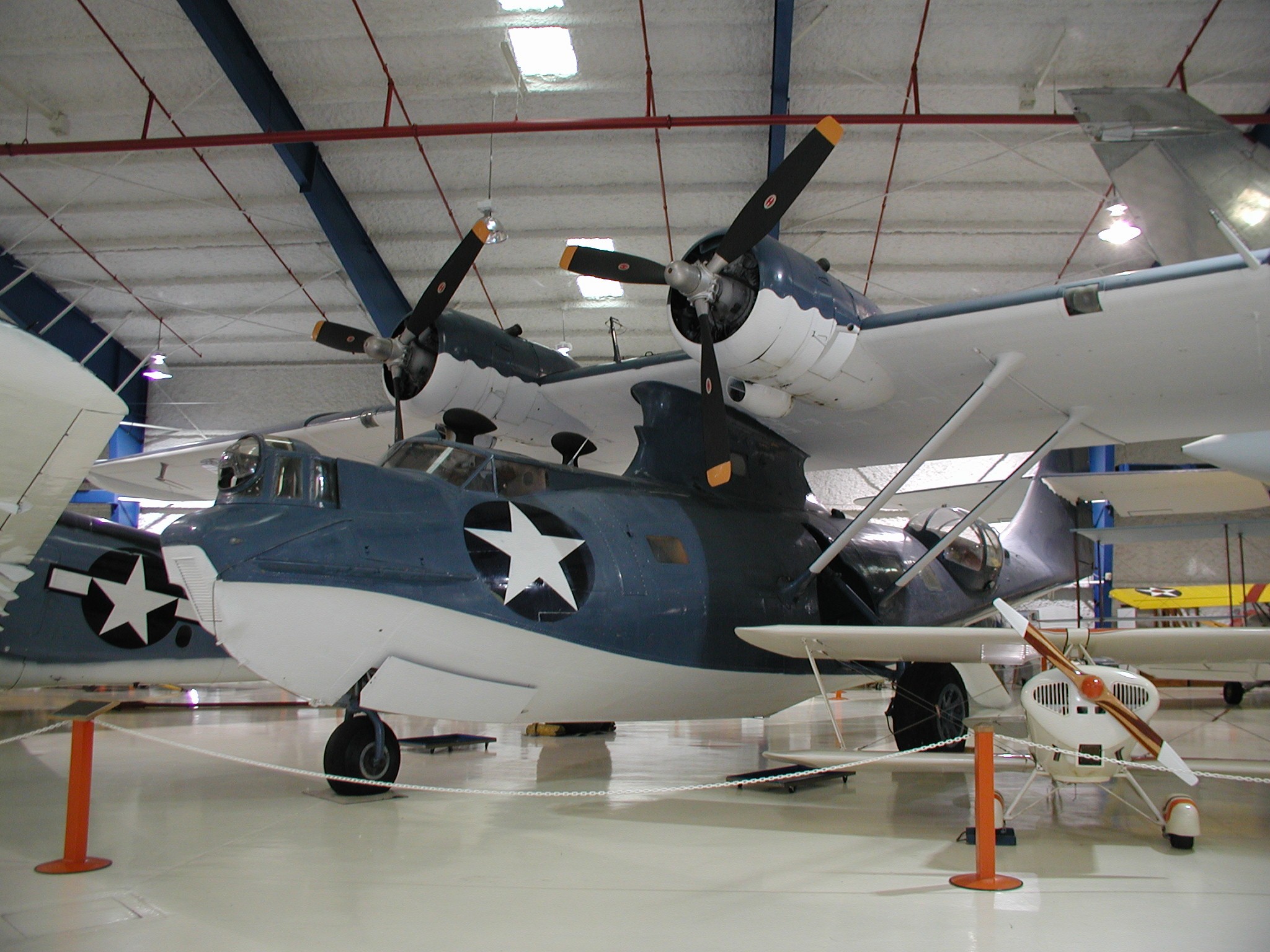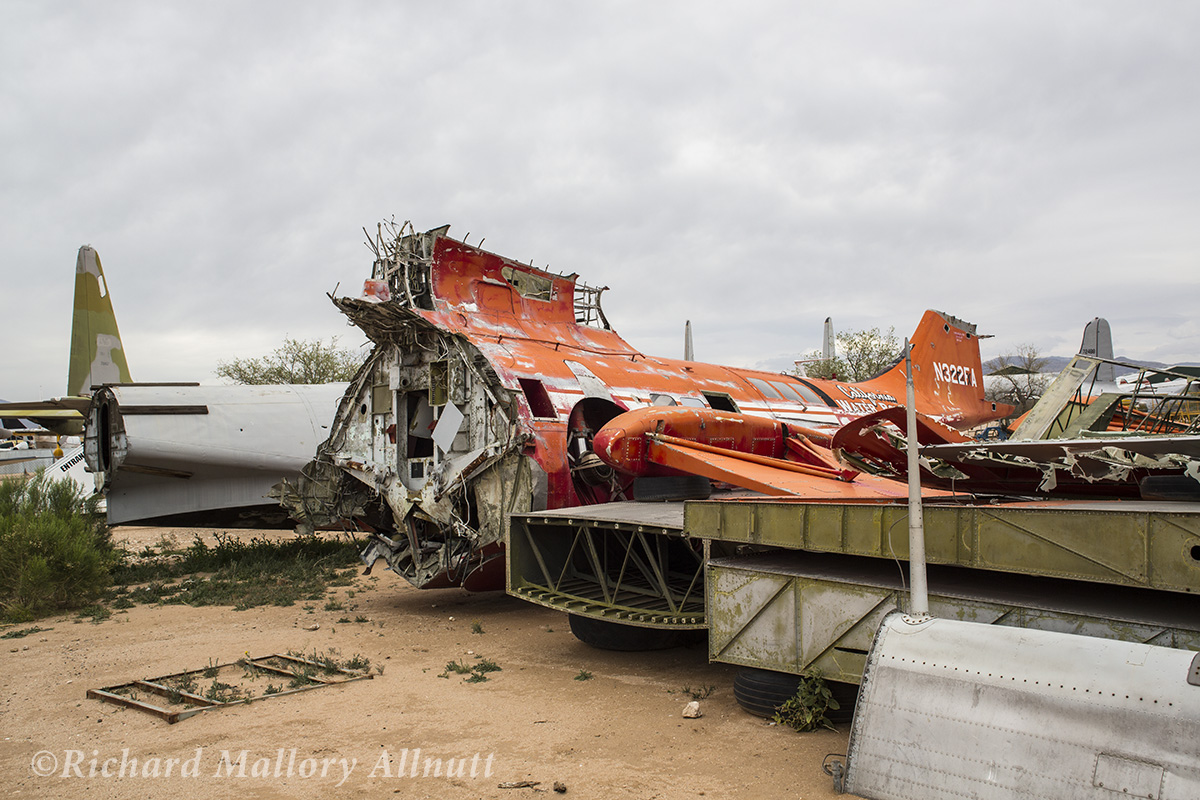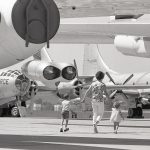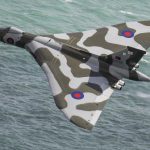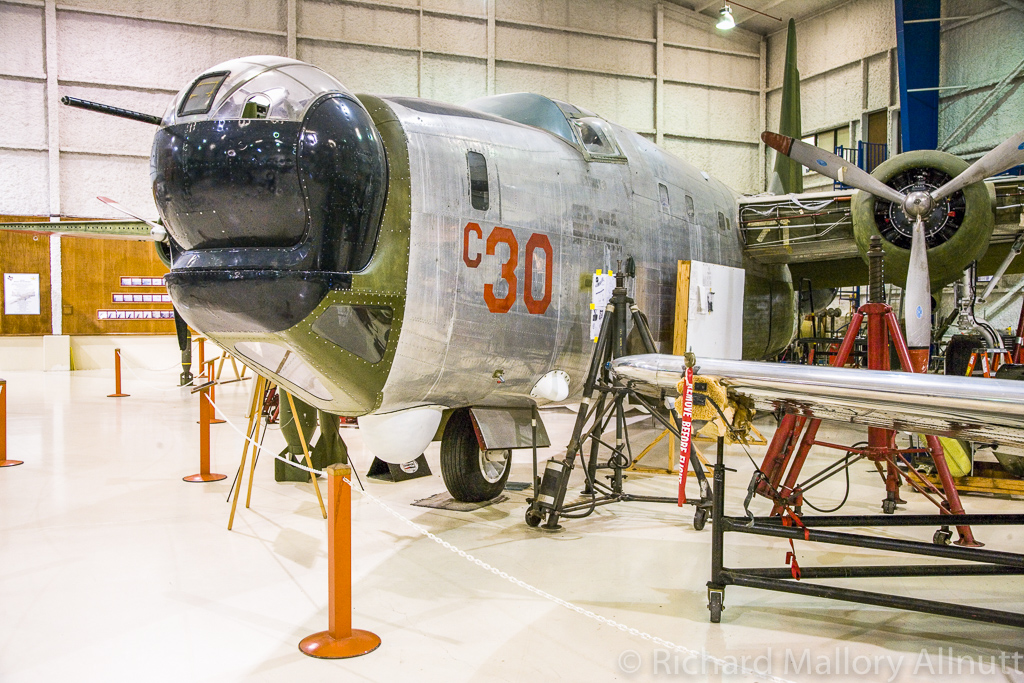
After a long and determined struggle to restore their Consolidated PB4Y-2 Privateer back to flying condition, the Lone Star Flight Museum has made the difficult decision to sell the old naval patrol bomber, along with their PBY Catalina. Both aircraft had suffered significant damage from the devastating tidal surge during Hurricane Ike back in September, 2008. The museum’s site, in Galveston, Texas, is right at the waters edge, so had no chance of withstanding the wall of salt water that burst in through the hangar walls on that dark day. The Catalina was jostled significantly by the turbulent flow, while seawater soaked the Privateer’s fuselage to a considerable depth. As a consequence of the salt exposure, corrosion concerns have become an issue, and must surely have contributed to Lone Star’s decision to sell.
The museum was always vulnerable to the whims of the sea, being so close to the Gulf of Mexico, and Hurricane Ike finally convinced the museum board to move further inland. They are in the process of establishing a new facility at Ellington Field in Houston. They plan to break ground later this year, and it will be an impressive building when complete. That being said, the costs of moving large, non-flying aircraft to the site, coupled with the costly restorations yet remaining have clearly caused a re-think in the museum’s attitude towards the two patrol aircraft.
Lone Star has found a great new home for the two aircraft though. They will be moving to the Pima Air & Space Museum near Tucson, Arizona. Pima is a marvelous place, and one of the largest and most comprehensive military aviation collections in the world, rivaling even the National Museum of the United States Air Force for its lineup of US military types. The Privateer will fill a big gap in their collection and make an interesting comparison to the museum’s B-24 Liberator from whose design it derives. The Catalina also fills a necessary space at Pima too, although they already have a significant gathering of parts in storage from no less than four different examples. Pima had intended to build one complete aircraft from the four wrecks, but with its new acquisition, these components will likely find new homes elsewhere.








